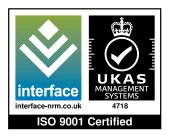Copper busbars are important parts of modern electrical systems because they work as key conductors to move electricity quickly and efficiently between different industrial and business uses. These strong copper strips have high conductivity and durability, which are necessary for safe and reliable energy transfer. Engineers can use them in switchboards, distribution panels, or electrical substations.
This article explains how copper busbars are manufactured in the UK. It gives a thorough explanation of the steps taken to turn raw copper into a finished conductor.
Role of Copper Busbars Manufactured in Electrical Engineering
Electrical engineers have traditionally praised copper for its conductivity, corrosion resistance, and mechanical strength. Busbars, which receive and distribute electrical power in installations, are made from it due to its characteristics.
A copper busbar is a flat, solid strip or bar that compactly distributes electrical current. Control panels, power cabinets, and energy systems employ it because of its low electrical resistance and thermal performance.
Copper busbars offer a reliable power supply with little loss in factories, hospitals, and data centres. Experienced UK manufacturers like ILF Products develop and test busbars to the highest standards for these applications.
Step-by-Step Manufacturing Process of Copper Busbars
Turning copper into a conductor for your electrical system involves a long and complex process. Manufacturers follow this process to ensure the final product delivers excellent conductivity, strong mechanical performance, and long-term reliability. Skilled engineers maintain precise tolerances, operate in clean environments, and apply strict quality control at every stage of production.
Material Selection:
The process begins with picking the right copper metal. Standard materials include electrolytic tough pitch (ETP) copper or oxygen-free copper, which have a high permeability. Electrical conductivity, resistance to corrosion, and mechanical strength are some of the most important factors that determine the choice. All of these are necessary for the busbar’s special purpose.
Material Preparation:
Copper is commonly available in rods, sheets, or coils. The raw material is cut to the appropriate length and size, taking into account the final busbar specifications. This phase provides consistency and prepares the copper for further shaping and processing.
Melting and Casting:
For certain types of busbars, especially those requiring oxygen-free copper, manufacturers melt the raw copper in a controlled environment. They typically use temperatures exceeding 1100°C to melt the copper before shaping it into bars. During this stage, they take specific measures to prevent oxygen exposure, which could otherwise affect the copper’s conductivity and mechanical properties.
Extrusion and Rolling:
Operators feed the straightened copper bars into an extrusion machine, where they push the copper through a die under high pressure and temperatures between 700°C and 740°C. This process forms the basic shape of the busbar. They then rapidly cool the extruded copper to enhance its mechanical performance and refine the grain structure. After cooling, they roll the copper to achieve the precise thickness and surface finish required.
Cutting, Bending, and Shaping
Technicians cut the busbars to the required lengths and may bend or shape them using CNC machines for precision. Companies like ILF Products employ trained technicians and modern fabrication tools to ensure that every detail matches design specifications.
Hole Punching and Drilling:
It is easier to place and connect the cables when holes are punched or drilled into the busbars. Accuracy is very important because mistakes can hurt performance and safety. To keep quality and regularity high, CNC machines are often used.
Surface Treatment:
Busbars are often treated on the outside to make them more conductive and protect them from rust. Tinning or silver plating is a common way to do it. These coats make the busbar last longer and work reliably in a variety of settings.
Insulation (If Required):
Manufacturers insulate some copper busbars based on their intended use to prevent accidental contact with other conductive components. They apply insulation materials like heat-shrink tubing or specialised tapes to ensure the busbars meet safety standards.
Quality Control and Testing:
Throughout the manufacturing process, rigorous quality control checks are performed. These include:
- Conduct conductivity tests to verify electrical performance.
- Dimensional checks to ensure precise sizing
- Visual inspections for surface defects
Technicians use testing equipment such as multimeters and impedance analysers to confirm that the copper busbars comply with international standards like IEC and NEMA.
Sustainability in Copper Busbar Production
Sustainability is becoming more and more important to modern producers. Manufacturers often recycle previously used copper during production. Copper remains one of the few materials that retain their properties through repeated recovery and reuse. This saves energy and is better for the Earth.
Where possible, manufacturers treat and reuse the water used for cooling and washing. They also collect copper shavings and return them to the supply chain to minimise waste.
The Value of Process Knowledge in Busbar Selection
Making copper busbars requires metallurgy, technical precision, and quality control. Manufacturers follow technical requirements and industry best practices at every stage, from raw copper to the final conductor, to ensure performance and reliability.
Understanding copper busbar manufacturing helps improve electrical system component selection. Knowing the manufacturing process helps design engineers and procurement specialists assess quality, sustainability, and application applicability.
ILF Products ensures its copper busbars satisfy modern infrastructural and industrial needs. Their dedication to manufacturing standards represents the UK’s attempts to maintain electrical product quality and innovation.
Milly Edwards
Sales and Marketing Executive: Responsible for creating content for ILF's social media channels, website, print media and promotional work.








